A National Audit Office report claims that there has been a 49 per cent rise in parts being cannibalised from Royal Navy vessels to fix others in the fleet.
The MoD argue that increasing complexity in technology on platforms can mean it makes sense to take an existing component from one vessel which is not required at that time and put it on one that is to deploy, rather than waiting around for new supplies to be delivered before the vessel can sail.
Across ships and submarines, equipment cannibalisation has increased 49 per cent in the last five years, with a total of 3,230 instances involving 6,378 parts.
The National Audit Office warned:
“Each instance of equipment cannibalisation can delay programmes, create additional engineering risks and add to the work of staff, affecting morale.”
Between April 2012 and March 2017 there were 3,230 instances involving 6,378 parts, with 795 instances in 2016-17 alone — the equivalent of 66 a month, up from 30 a month in 2005.
The NAO’s report showed 71 per cent of parts cannibalised were of low value but the cost of moving the parts “could be much greater”.
“The risk of cannibalisation has increased further with reductions in fleet sizes meaning the armed forces have limited alternative equipment to deploy” the report said.
We contacted the MoD who told us that a Royal Navy spokesperson said:
“Less than half a percent of parts we use come from swapping components, and we only do this when it’s absolutely necessary to get ships out of port and back onto operations more quickly. We continue to make improvements to how we manage this long-established practice.”
The practice is reportedly only used when all other sources of supply have been explored.
The MoD also say that the new £1bn support model they announced will enhance the way they manage spares and repairs across the fleet.
The key findings of the investigation are:
- Equipment cannibalisation can be necessary but should only happen when no other solution is available. The Ministry guidance states “cannibalisation will only be conducted where no other solution is available.” Decision-makers consider operational priorities and the estimated time to obtain new parts. In the last five years, between 0.3% and 1.4% of parts provided to the main classes of ships and submarines have been cannibalised parts. However, each instance has a wider impact beyond the part being replaced and can signify broader issues with the process for getting spare parts.
- Across ships and submarines, equipment cannibalisation has increased 49% in the last five years, with a total of 3,230 instances involving 6,378 parts. During 2016-17, there were 795 instances of equipment cannibalisation. This equates to 66 instances a month, compared to 30 a month in 2005. Since 2004, the Navy has reduced its fleet of ships and submarines by 31% from 127 to 87, meaning that a higher proportion needs to be deployed, or ready to deploy, at any one time in order to meet defence requirements. In 2016-17, ship and submarine equipment cannibalisation accounted for 60% of instances across the Navy. Navy Merlin helicopters make up the remaining 40%.
- Some 40% of ships and submarines receiving cannibalised parts needed them so they could be ready for operations or training. In these cases, equipment cannibalisation rectified issues that would have reduced the operational capability of ships and submarines. The remaining 60% of ships and submarines did not need the parts for operations or training. For example, in some cases the parts were required to complete planned maintenance work to a specified schedule so as to avoid potential delays and additional costs.
- Our analysis shows 71% of parts cannibalised on the basis of operational need were low value, but the cost of moving the parts could be much greater. The majority of cannibalised parts cost less than £5,000, with less than 1% valued at over £500,000. The Ministry does not know how often the cost of replacing cannibalised parts exceeds the value of the part being replaced. The Ministry’s analysis, covering 146 Type 23 equipment cannibalisations in 2012, showed that in 50% of these cases, the cost of equipment cannibalisation was equal to, or greater than, the value of the part. In 25% of cases it was four times greater. Even though equipment cannibalisation has increased, the Ministry has not updated or broadened its analysis.
- The need for equipment cannibalisation is exacerbated by both a lack of information about when parts will be delivered, and delays in receiving parts on time. In March 2017, the DE&S Ships Operating Centre met 55% of part demands from ship and submarine crews by the required date (target 75%). The Submarine Operating Centre met 63% of demands (target 80%). At the same time, of 17,038 ship part demands already past their required delivery date, 34% had no recorded forecast delivery date. Identifying a forecast delivery date can be more difficult where the Ministry has contracted-out support arrangements. The Ministry has undertaken a number of initiatives to improve ship and submarine supply chain management.
- The Ministry does not routinely monitor the use, causes and impact of equipment cannibalisation across the Navy. The Ministry considers and assesses equipment cannibalisation and trends over time for individual vessel types. There is no overall accountability for managing equipment cannibalisation across the Navy or routine data collection or analysis assessing why equipment cannibalisation occurs or its impact. This information gap makes it difficult to determine when equipment cannibalisation is becoming more routine, its underlying causes, and the trade-offs between cost savings and equipment cannibalisation.
- The Ministry has taken decisions to reduce support without complete information to fully assess and manage the impacts and costs. To remain within its budget, the Navy reduced its maritime support budget by 6% (£271 million) in-year in the last two years. Of these reductions, an estimated £92 million could increase the need to cannibalise parts. In particular, the Ministry decided not to invest in complete technical documentation or in fully cataloguing parts when vessels were brought into service.
- Each instance of equipment cannibalisation can delay programmes, create additional engineering risks and add to the work of staff, affecting morale. Equipment cannibalisation has a number of impacts the Ministry needs to manage including:
- Programme delays: In the last five years, the number of equipment cannibalisations from the Astute-class submarine production line increased 43%, from 77 instances in 2012-13 to 110 in 2016-17. Cannibalisation caused a 42-day delay and the Ministry having to pay an additional £4.9 million for the third Astute submarine and has also affected other boats.
- Engineering risk: Cannibalised parts, along with additional parts that must be removed to gain access to them, may be damaged whilst being removed, transported or re-installed. An estimated 11% of the parts recorded by ships as having shortcomings in their material, design or documentation were cannibalised.
- People: The 2017 Navy risk register identified a lack of spare parts as a risk to operational capability given its demoralising effect on personnel.




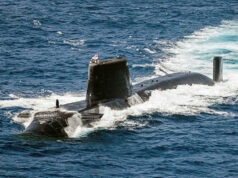

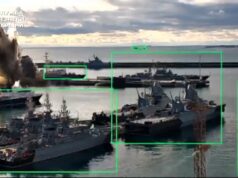
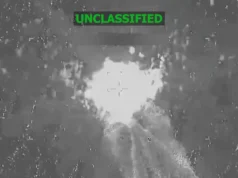
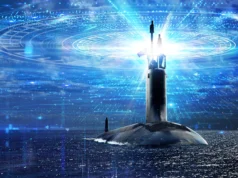

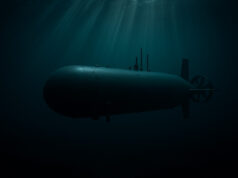

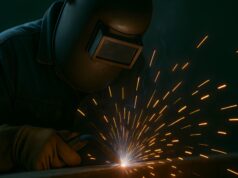

I wonder what positive message Fallon will derive from this.
This relates to less then half of one percent of parts used – wow. What a non story.
Half a one percent in volume or value?
I would suggest the latter.
MOD using spin again to cover up a problem
this has been ongoing for years, generally if a CAT A OPDEF requires a spare part, RDD can’t be met, then STOROB agreed as a last resort. Maybe a bigger problem as we have fewer assets to “rob” from so pressure more apparent/felt on the front line??
“We now have so many ships in our vast Royal Navy that there is no alternative to cannibalisation as manufactures simply can’t meet demand, however capacity will soon increase thanks to our £175 Billion investment plan”
A mythical response by Michael Fallon
Nothing I suppose now that he’s resigned. I’ve never liked Fallon but he’s been one of the better defense seceterys. Unlike the majority of them, he never acted like he hated being the secetery of defense and just saw it as stepping stone to more prestigious positions like Hammond. His only real sin was toeing the party line and not standing up for the armed forces more, though that could have been ongoing behind closed doors.
This is all because of the stupid foreign aid budget. We are destroying our defences just to fund some corrupt third world countries. It makes me incredibly angry.
We spend £1bn on a t45 warship then use as a parts catalogue to support other t45s.
That people is a scandal.
The Army and Airforce also do the same, in order to overcome short-term spare flow. At one tank show, the commentator spoke about the high level of cannibalisation taking place in armoured vehicle stock depots. And that was about ten years ago! I would suggest cannibalisation has been the modus operandi for centuries?
That is true, but it is escalating on an exponential basis due to a lack of funding.
STOROB action has always happened in the RN its nothing new.
Ships in refit , preservation or even build ( POW has no doubt been STOROB’d to get QE to sea) have always had parts robbed to keep other higher priority units going until the new parts pop out of the refurbishment loop or out of the new manufacture loop.
What is discouraging is the type items that get STOROB’d. You would think that it would just be complex electronic equipment or specialist mechanical parts…er no… it is also lots of low level equipment, valves, hydraulic hoses, cable looms etc. The sort of stuff that is not going to be on the shelf in stores “just in case its needed” because its easier and cheaper according to the cost saving bean counters, to get it from a manufacturer when required.
It costs money to have stock on a shelf. The item needs to be bought , needs to be preserved for the shelf life of the item and possibly tested and maintained on a specific timescale. So if you can avoid this its an instant win.
The problem arises when the manufacturer doesn’t have the item or the parts to make the item available immediately. Delays from their supplier add up and then the supply time for the item suddenly goes from a few days to weeks or months.
Some items can be bought locally. During my time in we bought Hydraulic hoses that can be made by many companies through a “Man in a Van” who would usually fix say Mobile Cranes or Construction Plant. RS Catalogues and locally buying parts from electronics shops have happened. However the Risk associated with using these parts needs to be quantified as they may not be Mil Spec by the Platform Managers ( Driven by Haddon Cave) . They will live with the risk short term but long term they will want the risk removed hence the quickest and easiest route STOROB
More good news, the year of the Royal Navy just gets better and better. At the very least this is bringing about public awareness of the problems the Navy faces.
I had a mate called Dave back in the seventies who was nicknamed the hustler. He was a sparks by trade but if there was anything required for a ship he was on and it was in the dockyard or naval base he would find it.
Yes cannibalization of parts is nothing new but what gets stripped can be telling. A few circuits here a few spark plugs and water filters there nothing big. Happens in every service in the world. Control panel or motor for a Artisan or Sampson radar, transmission for a Wildcat or Apache much greater issue to address. Say small parts for the Astutes Sonar array very long lead times on those. Transmission or composite rotor blades or data link for an Apache those you have to wait to come from FT.Worth.
I understand this kinda thing happens but my concern is with such a vast number of occurrences, how the RN keeps track of what’s been taken from what ship and what mechanism is in place to order replacement parts and have them fitted to the cannibalised ship in a timely manner. It all seems very ad hoc and could spell disaster when ships are needed but can’t be put to sea for want of bits missing!
Its a well worn and well trodden path and controlled by a dedicated cell of staff in Fleet HQ.
Fallon has resigned!
Damn you, you beat me to it by 20 mins.
This spare parts story was 2nd item on the mainstream news this morning so maybe the next MOD might do something.
According to the journalist on Twitter (according to the Herald):
“Bloody hell. Sir Michael Fallon has just resigned as Defence Secretary. I doubt my knee was the reason.”
I hope after the budget we’re not all saying “I wish Fallon was still Defence Secreatary”.
I didn’t like him to start with, but I think apart from the usual political hyperbole “growing Royal Navy”, he gew into the job, to the best of his ability within budget constratints, severe ones. It could get a lot worse with a bench-sitter yes person taking over 🙁
My thought exactly dadsarmy. Brings to mind images of rats and sinking ships.
Ding dong…. Fallon’s gone!
Better the devil you know……….
There is talk of The PM appointing the first woman defence minister. Why is their sex important? We need the most competent person – understanding of defence matters with an ear to listen and an inclination to innovate!
Quite right Nick. Harriet Baldwin?
It seems like an efficient use of resources to have parts and systems be easily swappable between naval assets.
If a vessel is not on active duty, if it’s in for refurbishment or repairs or otherwise not deployable then it’s systems, weapons and crews capabilities are not being maximised.
The huge pushes for interoperability between navies will ensure that hot swappable systems become easier and cheaper to reuse in flexible ways.
Imagine all vessels are able to host a standard shipping container containing a VLS system, you would be able to move it from one vessel to another with a fork lift. This is a good thing.
Its a bit more involved than that.
I have worked with operators of MEKO frigates who have containerized systems on board. They are a pain to work with and cause as much hassle as having a fixed system on board.
You still need to do the integration and setting to work. The only advantage is that if you have spare “containers of systems” you can upgrade the container ashore in a workshop with new electronics and then swap it out during a maintenance period.
You still need to do all the setting to work though.